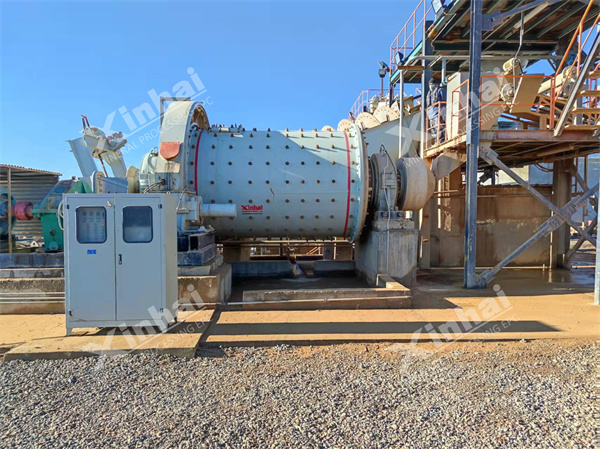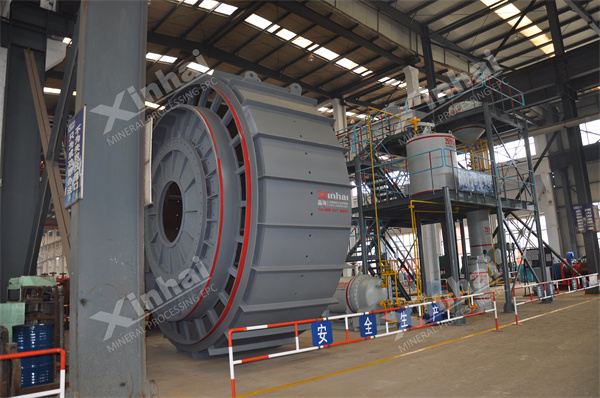The role of crushing and grinding technology in the entire beneficiation process is self-evident. Choosing a suitable crushing and grinding technology can not only ensure the smooth progress of subsequent beneficiation processes, but also have a positive impact on concentrate grade and beneficiation recovery rate. It can also reduce energy consumption costs and increase economic benefits for beneficiation plants.

1. Two or three stage crushing+ball milling process
The two-stage or three-stage crushing and ball milling process is a very conventional and traditional crushing and grinding process, which has been applied for decades and has not been replaced for such a long time, naturally having its advantages.
The core of multi-stage crushing and ball milling technology lies in promoting the "more crushing and less grinding" process. Through this process, the particle size of the grinding material can be effectively reduced, thereby achieving the goal of increasing production and energy conservation. The conventional three-stage closed-loop crushing+ball milling process is widely used both domestically and internationally.
However, any process has its disadvantages, and there are also some problems with this process: on the one hand, the process is relatively complex, requiring multiple devices to work together, which increases the difficulty of operation and management. On the other hand, the high cost brings certain economic pressure to enterprises, whether it is the purchase, maintenance or operation expenses of equipment. With the introduction of semi autogenous grinding technology, the conventional three-stage closed-loop crushing+ball milling process is no longer the preferred choice for metal mining projects. The semi autogenous grinding technology simplifies the process flow to a certain extent, reduces costs, and improves production efficiency.
2. Semi autogenous grinding process
The semi autogenous grinding process has been widely used in the field of metal mines. Its main process includes various forms such as single-stage semi autogenous grinding (SSSAG), semi autogenous grinding+ball milling (SAB), and semi autogenous grinding+ball milling+hard rock crushing (SABC).
This process has many significant advantages, such as a high crushing ratio, which can achieve efficient crushing in a shorter process flow; The relatively small number of equipment can reduce equipment investment and maintenance costs, while simplifying production layout.
However, the semi autogenous grinding process is not perfect, as it is sensitive to changes in ore properties. Once the hardness, humidity, and other properties of the ore change, it may affect production efficiency and product quality. In addition, this process consumes a high amount of electricity, which increases production costs.
At present, the development direction of domestic semi autogenous mills is large-scale and intelligent. This is because the growing market demand has put forward higher requirements for the production capacity of the selection factory, which requires large-scale equipment to fulfill this mission; And intelligence can enable equipment to achieve automated control, saving labor costs while also improving production efficiency and ensuring smooth operation of equipment.

Self/semi autogenous grinding+vertical grinding process: This process can simplify the process, reduce investment, save energy and reduce consumption, and increase production and efficiency. It has been applied in a certain iron ore beneficiation plant in Australia and China, and has broad prospects for application in copper slag projects.
High pressure roller mill+vertical mill process: This process has the advantages of energy saving and cost reduction. The mainstream research processes include multi-stage high-pressure roller mill series connection+vertical mill, and double closed circuit crushing+vertical mill of high-pressure roller mill. The former has been studied more abroad, while the latter has been promoted and used domestically, but this short process crushing and grinding technology is not yet mature.
High pressure roller grinding (+vertical grinding)+ISA grinding process: ISA grinding is widely used abroad and is still in its infancy in China. The innovation of its crushing and grinding process is mostly a joint process with high-pressure roller mills, which is currently in the research and conceptual stage. However, some joint processes can play an energy-saving role and reduce total energy consumption.
Traditional process transformation: The mining industry should upgrade and improve traditional crushing and grinding equipment to make it larger, more automated, efficient, and low consumption. Efficient and energy-saving equipment should be used in the selection and transformation projects. However, there is currently a lack of selection calculation standards, and the development of large-scale and intelligent equipment is slow.
New process research and development: The development of new crushing and grinding processes around high-pressure roller mills and agitator mills is a research direction. The self/semi self grinding+vertical grinding process and high-pressure roller grinding+vertical grinding process have already been applied in industry. The development of new processes for ISA mills is also a development direction. In the future, experimental research and industrial trials should be strengthened.